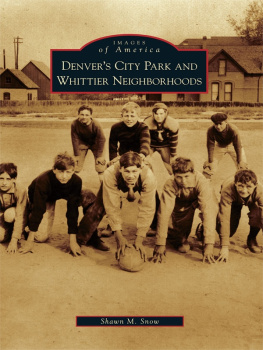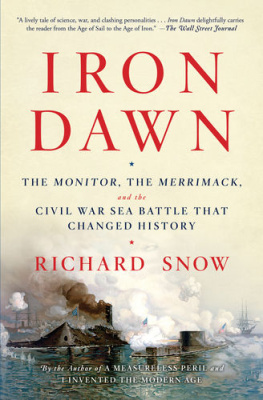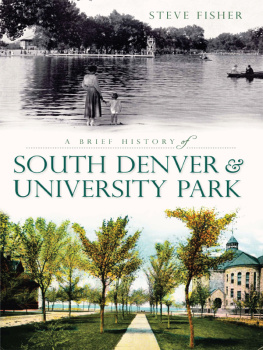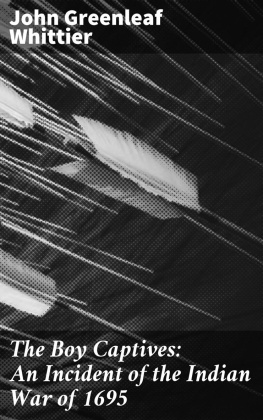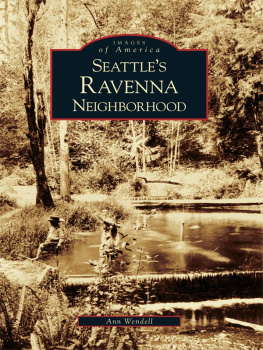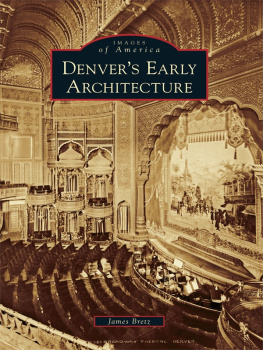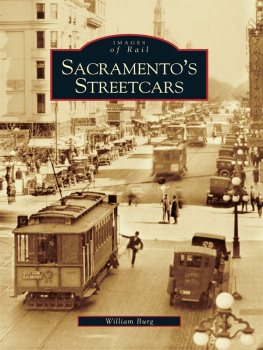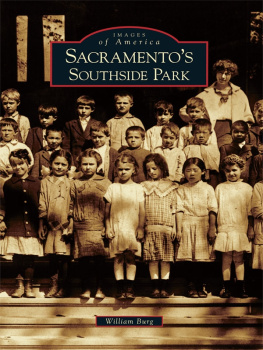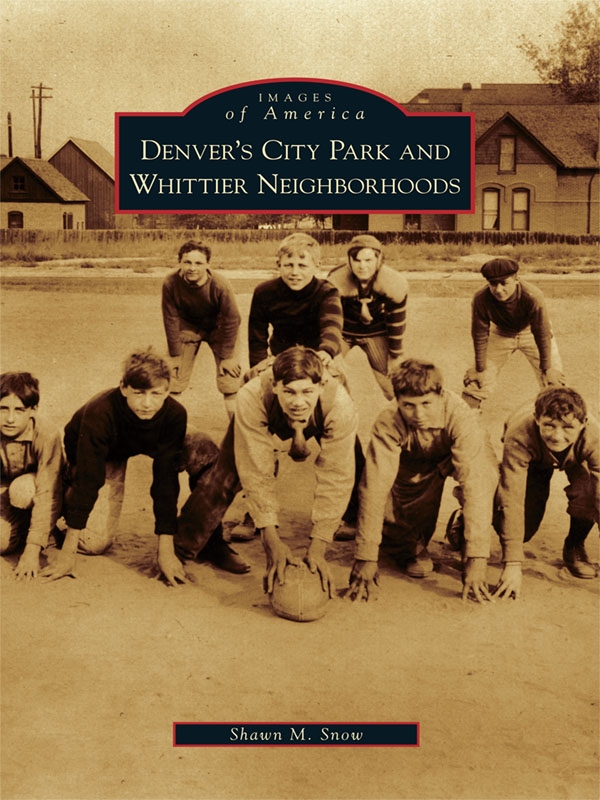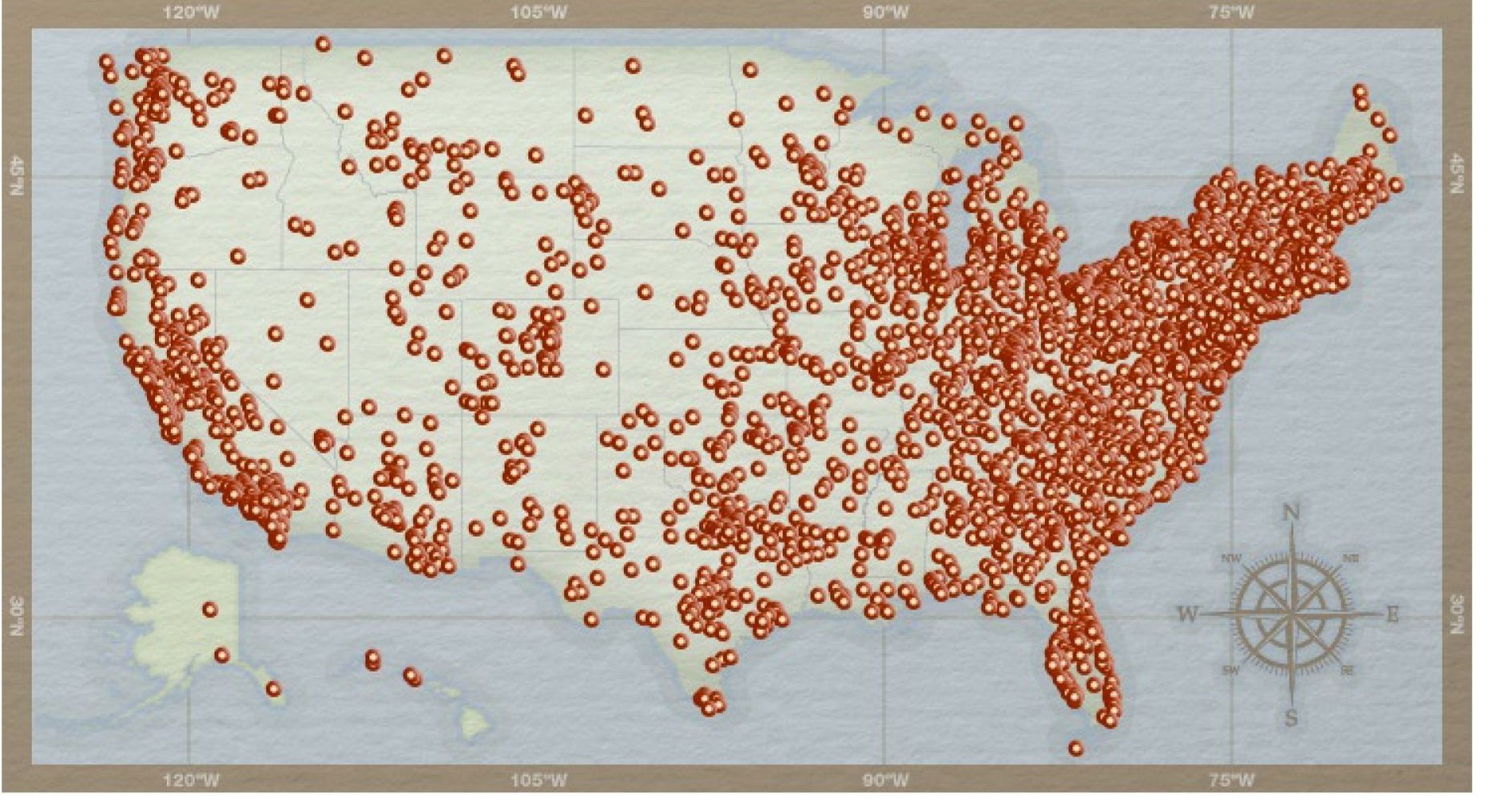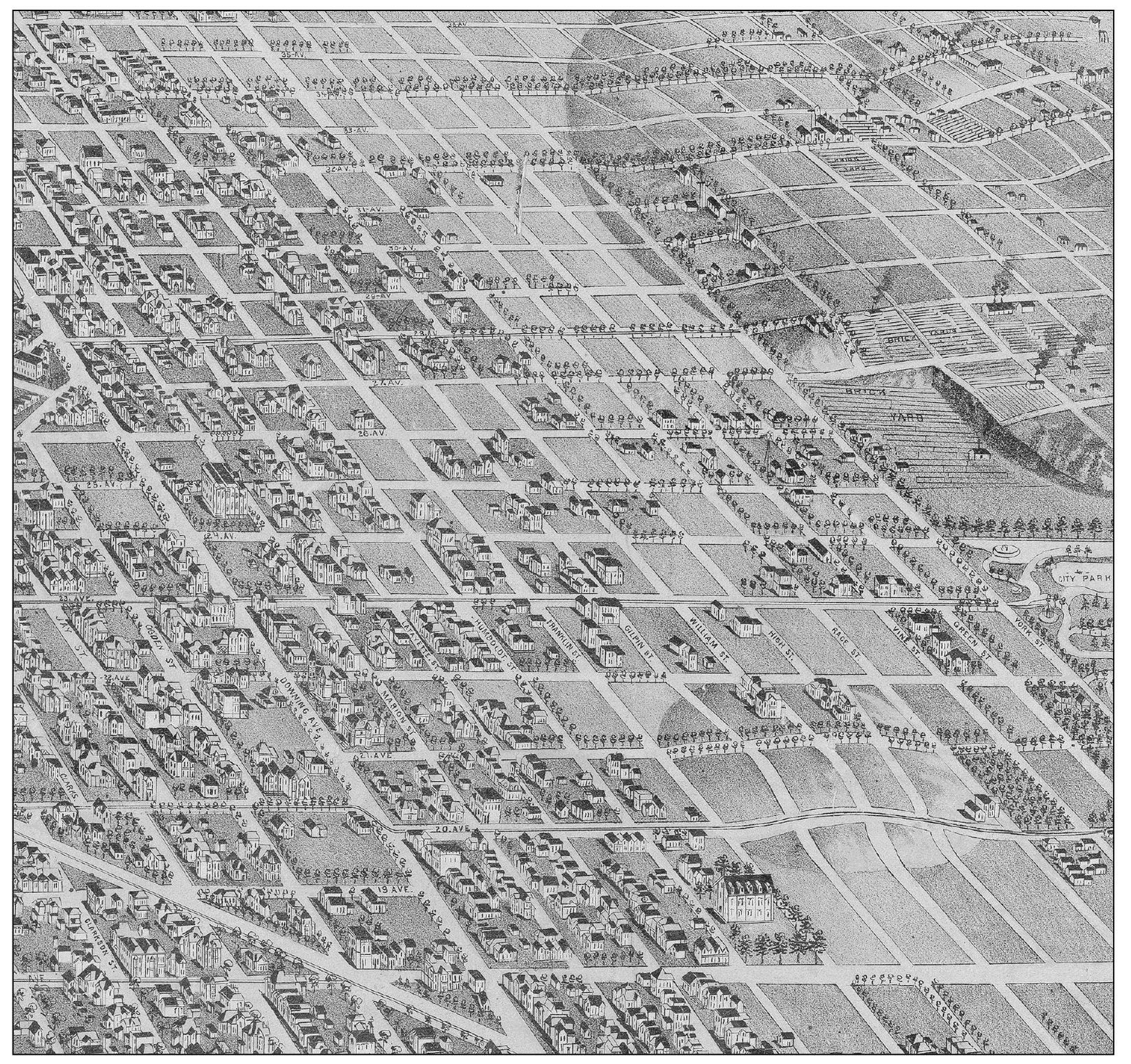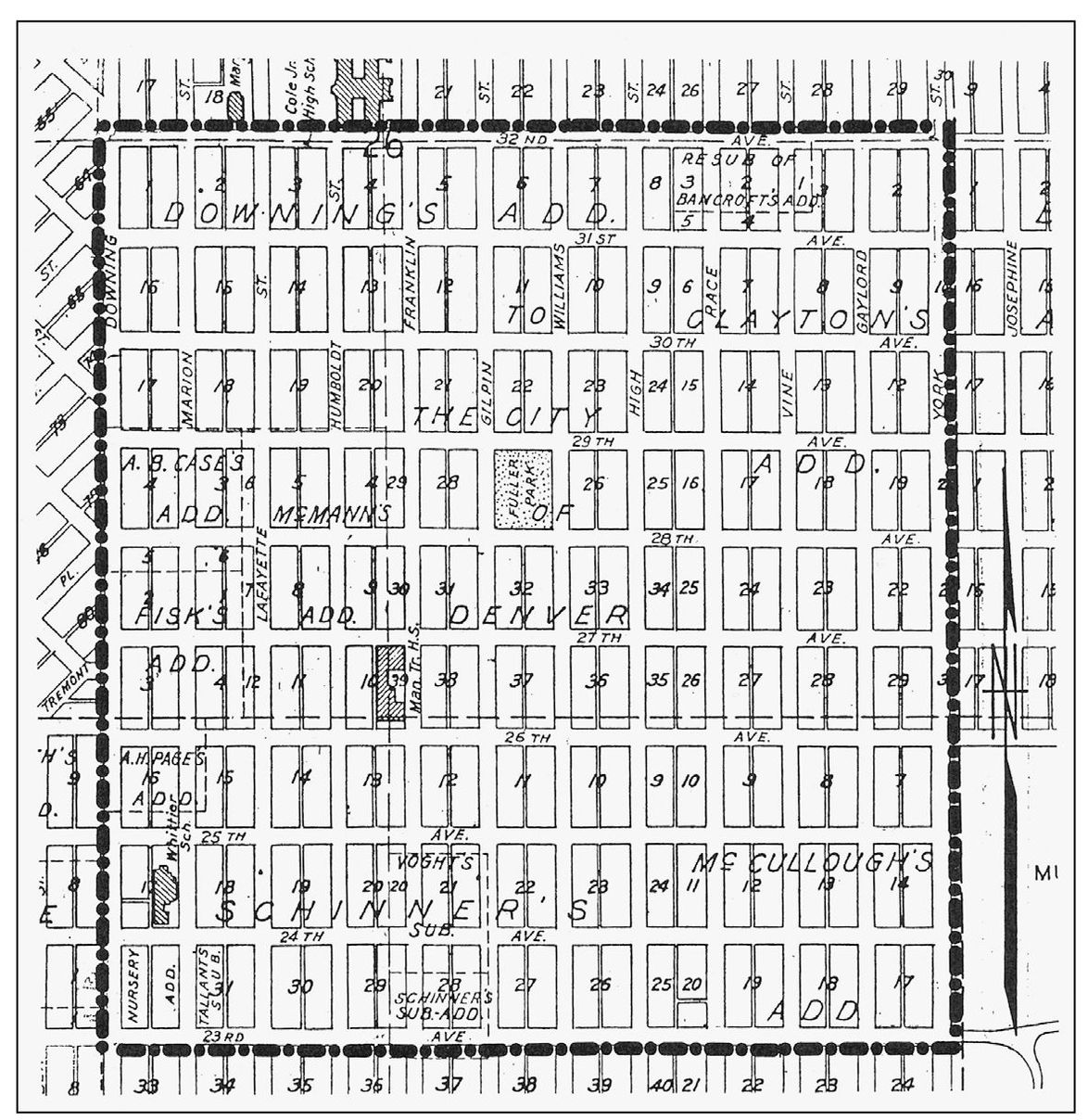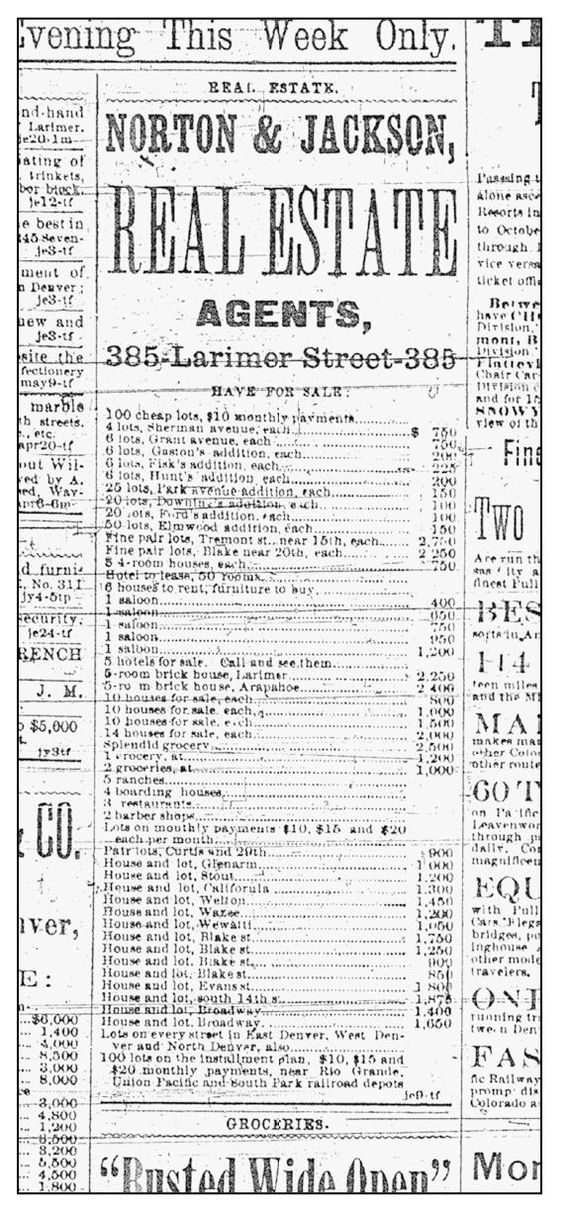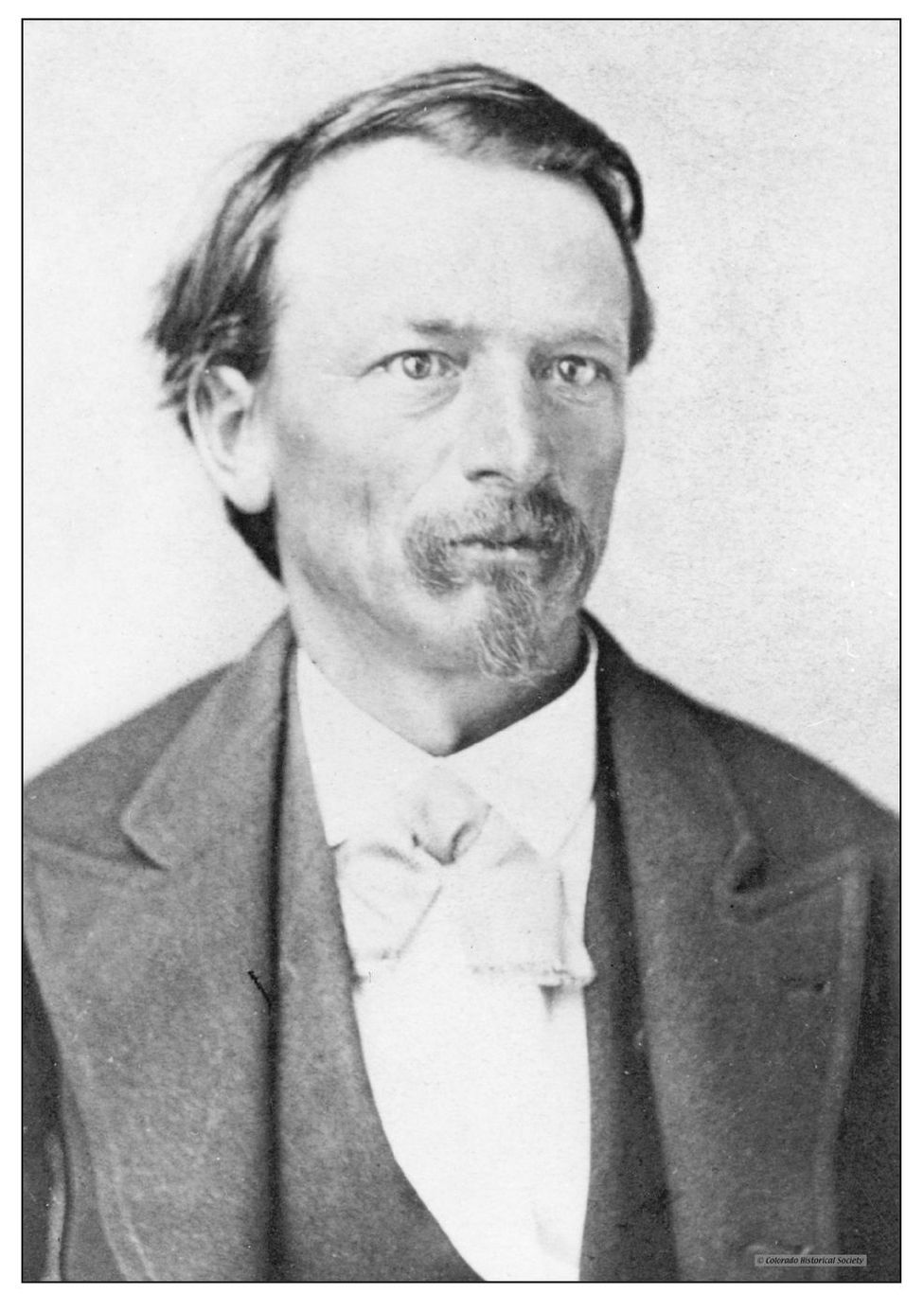ACKNOWLEDGMENTS
This project would not have been possible without enormous help. First I would like to give special thanks to both Aaron Will and Aaron Archer for providing much-needed research assistance. In addition, Aaron Archer gave unselfishly of his time and visited with many people to gather information and scan photographs from people across Denver. And thanks to sisters Cindi Wallace and Sandi Robben for sharing their amazing family chronicle of history in the neighborhood. Special thanks also to photographer Minka Frohring for giving advice on scanners and photographs and for also taking numerous pictures for this volume.
Thanks also to the following people, in no particular order, for providing help, advice, assistance, pictures, or all of the above: Nisaa Amin, Ray Acsell, Gail Dow, Diedre Bricker, Joyce Dillon, Marge Hook, Mel G. Garcia, Margaret S. Garcia, Kate Johnson, Heidi Kennedy, Sean Campbell, Victoria Kirby, Gary Kleiner, Linda Dowlen, La Wanna Larson, Joe Martell, Jim McNally, Tom Noel, Lynette Prosser, Nicki Rounds, John Ford, Bud Scott, Sherry Dennis, Amy Zimmer, Kenton Forrest, Rene Payne, Lisa Crunk, Patti Blazon, Duncan McCollum, Coi Drummond-Gehrig, Bruce Hanson, Wendell Cox, Jenny Vega, Linda Lebsack, Anne Bond, Don and Carolyn Etter, Laura Mauck, John Olson, Ginger Reichert, Judi Wright, Pernell Steen, Kathy Davis, Kathy Hill, Tom Simmons, Kristine Eklund Butler, Cathy Calder, Hannah Carney, and Jerry Roberts. And, of course, thanks to Kevin Pharris, also known as scanner monkey.
Many pictures in this volume can be attributed to the following: the Galilee Baptist Church (GBC); the Kate Johnson Collection (KJC); the Buffalo Bill Historical Center (BBHC); the Gary Kleiner Collection (GKC); Manual High School (MHS); the Whittier Elementary School (WES); the Van Loon daughters, Cindi Wallace and Sandi Robben (VLD); the Denver Municipal Facts (DMF); the Colorado Railroad Museum (CRRM); the Kenton Forrest Collection (KFC); the Denver Museum of Nature and Science (DMNS); the Denver Public Library Western History Collection (DPL WHC); and the Colorado Historical Society (CHS).
BIBLIOGRAPHY
Brenneman, Bill. Miracle on Cherry Creek . Denver: World Press, Inc., 1973.
Denver Municipal Facts . Denver: City and County of Denver, 19091931.
Etter, Carolyn and Don. The Denver Zoo, A Centennial History . Boulder, CO: Roberts Rinehart Publishers, 1995.
Etter, Don and Carolyn. Forgotten Dreamer: Reinhard Schuetze, Denvers Landscape Architect . Denver: The Denver Public Library, 2001.
Fallis, Edwina H. When Denver and I Were Young . Denver: Sage Books, 1956.
Fletcher, Ken. Centennial State Trolleys . Boulder, CO: Colorado Railroad Historical Foundation, 1995.
Goodstein, Phil. Denver Streets, Names, Numbers, Locations, Logic. Denver: New Social Publications, 1994.
Griffith, Stanwood C. Denver Tramways. Electric Railroads 30 (December 1961): 120.
Maclin, Gladys M. Character Education in the Whittier School. The Journal of the National Education Association (March 1931): 7980.
Mauck, Laura M. Five Points Neighborhood of Denver . Chicago: Arcadia Publishing, 2001.
Olsen, Margaret Hook. Patriarch of the Rockies: The Life Story of Joshua Gravett . Denver: Golden Bell Press, 1960.
Ortin, Carrie E. A History of Manual Training High School, 18921942 . Denver Public Schools Archives. Denver, 1942.
Peters, Bette D. Denvers City Park . Boulder, CO: Johnson Publishing, 1986.
Raughton, Jim L. Whittier Neighborhood and San Rafael Historic District . Denver: Historic Denver, Inc., 2004.
Schell, Laura. Saving Buffalo Bill: Discovery of the Jamestown Buffalo Bill Billboard. Western New York Heritage (Winter 2009): 3242.
Simmons, R. Laurie and Thomas H. Simmons. Whittier Neighborhood . Denver: Front Range Research Associates, 1995.
Stephens, Ronald J., and La Wanna M. Larson. African Americans of Denver. Charleston, SC: Arcadia Publishing, 2008.
Turner, Wallace B. Centennial History of Calvary Baptist Church, 18811981 . Denver: Privately printed, 1980.
Find more books like this at
www.imagesofamerica.com
Search for your hometown history, your old
stomping grounds, and even your favorite sports team.
One
SUBURBAN BLISS
THE WHITTIER AREA PERSPECTIVE MAP, 1889. Whittier was a new residential area in the 1880s. This neighborhood, bounded by Twenty-third Avenue on the south, Thirty-second Avenue on the north, Downing Street on the west, and York Street on the east, eventually took its name from the school of the same name at Twenty-fourth Avenue and Marion Street. City Park was platted just to the south of Twenty-third Avenue and east of York Street in 1882. By the beginning of the 20th century, the park was a huge tourist attraction. (DPL WHC, 4314.)
WHITTIER SUBDIVISION PLAT, 1945. This map shows the names of some of Denvers earliest residents. They were able to take full advantage of the citys growth. These subdivisions included developments by Alfred Case (1868); Jacob Downing (1869); Adolph Schinner (1870); George McCullough (1872); and William and George Clayton (1889), along with smaller additions made by Archie Fisk (1874) and Robert McMann (1887). (DPL WHC.)
ROCKY MOUNTAIN NEWS , JULY 7, 1880. Whittiers housing construction blossomed throughout the 1880s and up until 1893, when an economic depression took hold of Denver. This advertisement shows that lots in Fisks Addition were going for $225 each, while Downings Addition offered a bargain on lots for $100 a piece. Suburban Capitol Hill lots on Sherman and Grant Streets were much more expensive, while downtown lots on Fifteenth Street and Tremont Place went for more than $2,700. (DPL WHC.)
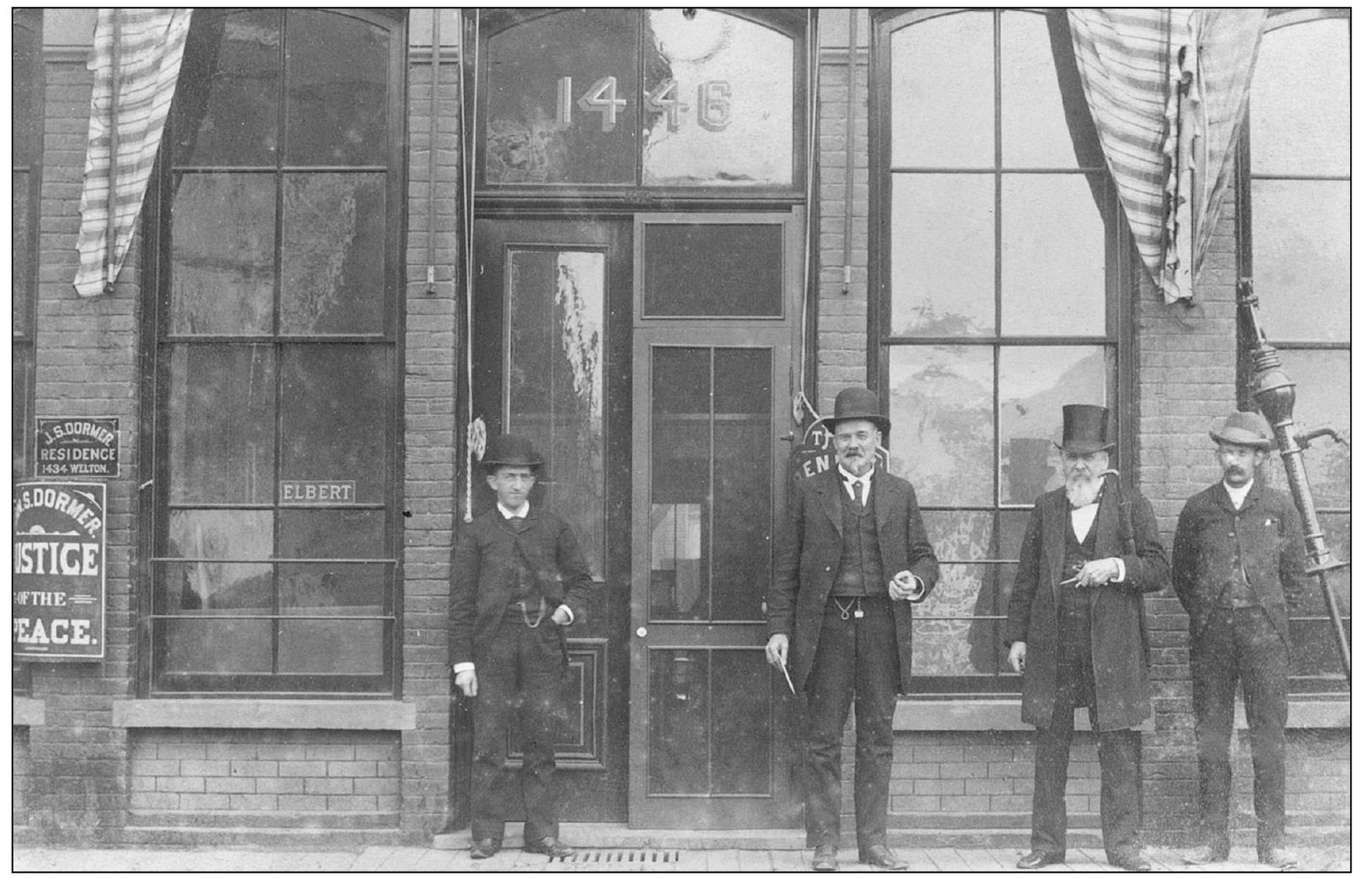
THE LARGEST SUBDIVISIONS. Jacob Downing (above, second from left) is standing next to former territorial governor John Evans (in a top hat). Downing commanded troops in the Civil War and was also involved in the notorious Sand Creek Massacre in 1864. Both he and Evans were huge promoters of the city. Downings ideas included obtaining parkland in both east and west Denver to be joined by a parkway. His modified vision contributed to the eventual establishment of City Park. Adolph Schinner (at right) had established Denvers first bakery before setting his sights on real estate. His addition stretched from Twentieth to Twenty-sixth Avenues. Schinner named a street after one of the most famous scientists of the 19th century, Alexander von Humboldt. The former Park Street eventually became known as Marion Street, named after Schinners friend Josie Marion. (Above, DPL WHC; at right, CHS, No. 10039329.)

